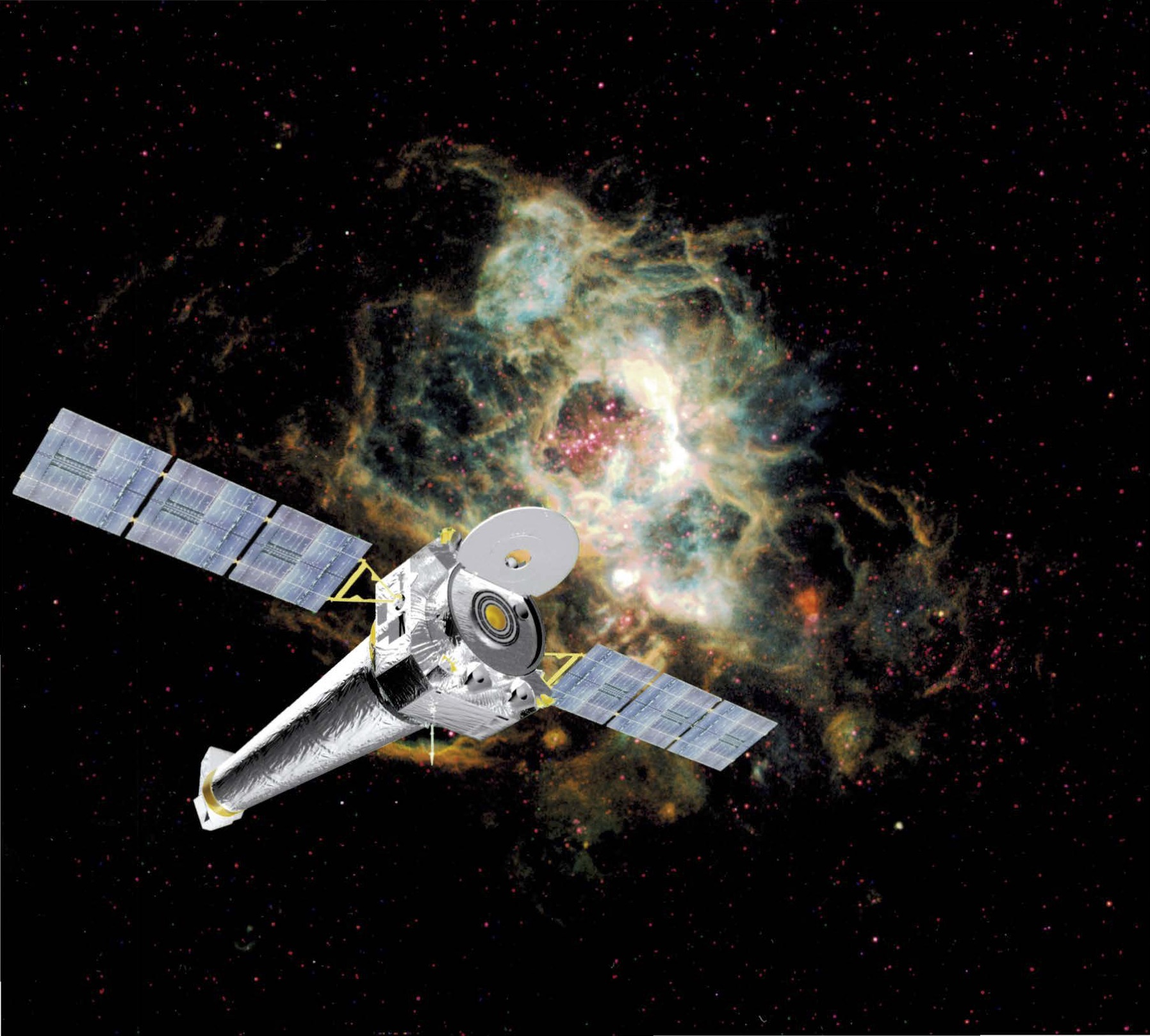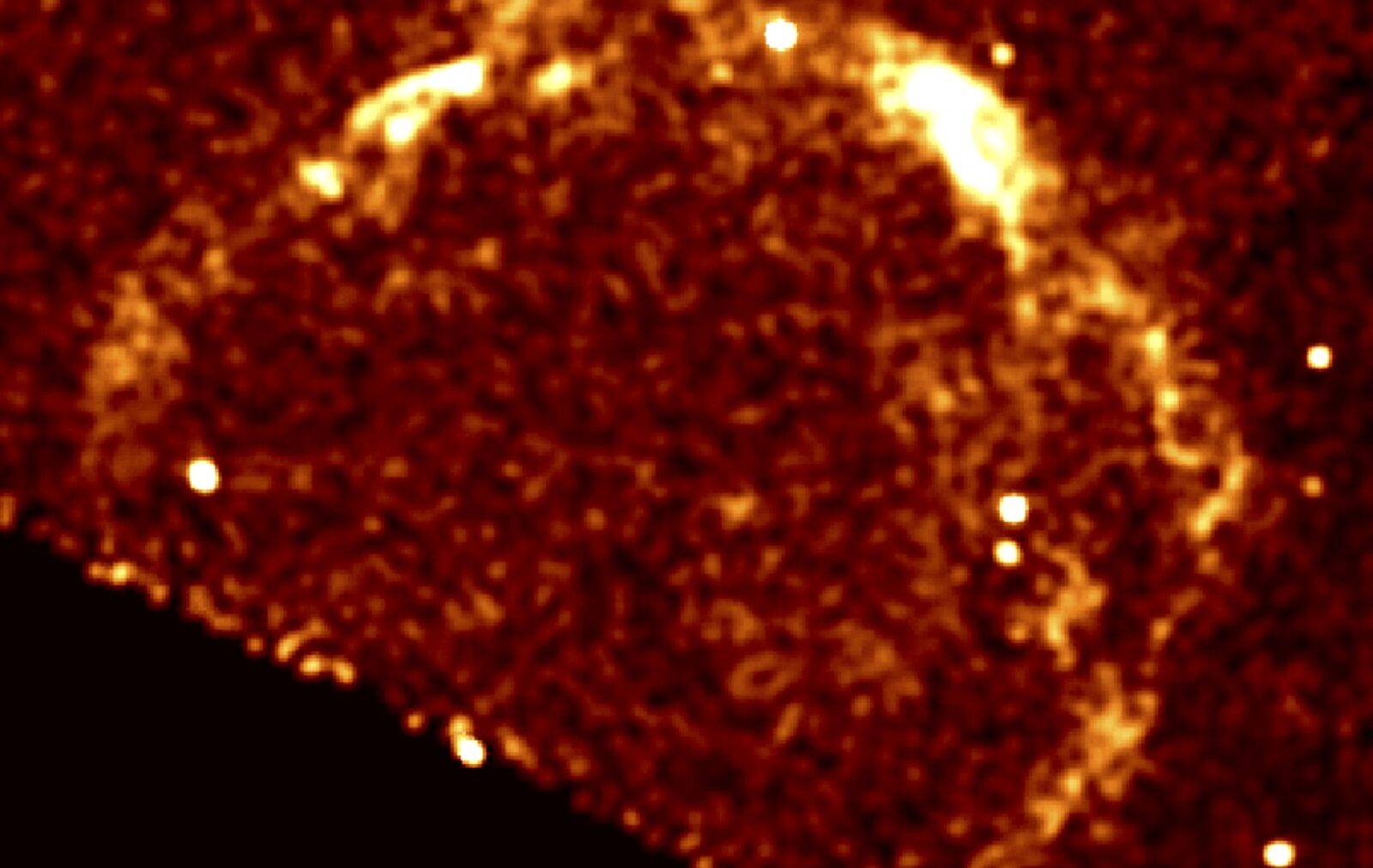The nature of very high energy gamma-rays from superbubbles revealed

An international scientific team, including Prof. Dr. Manami Sasaki from Dr. Karl Remeis Observatory, Bamberg, and the Erlangen Centre for Astroparticle Physics has used NASA’s Chandra X-ray Observatory – one of the most sophisticated X-ray observatories built to date – to reveal how very high energy (VHE) gamma-rays are produced by cosmic rays accelerated inside the 30 Doradus C superbubble, the only known VHE gamma-ray superbubble. The results of the work have been published in Astronomy and Astrophysics.
30 Doradus C is located in the Large Magellanic Cloud (LMC), a dwarf satellite galaxy of the Milky Way at a distance of about 170,000 light years. Even at this great distance it is visible to the naked eye in the southern hemisphere. Star formation is proceeding at a high rate in the LMC and very high mass stars (many tens the mass of the sun) are being born into new, massive stellar clusters. Collectively, through their powerful stellar winds and later their supernova remnants, these massive stellar populations blow huge ‘superbubbles’ into the surrounding interstellar medium. It is at the blast wave of the interior supernova remnants that cosmic rays are thought to be accelerated.
VHE gamma-rays are excellent tracers of cosmic ray accelerators such as supernova remnants. Charged particles are accelerated to incredibly high velocities and VHE gamma-rays can be produced either by accelerated electrons interacting with light, or accelerated protons interacting with gas. While VHE gamma-rays have been detected from 30 Doradus C before, it is not clear which mechanism dominates the gamma-ray production.
A key piece of evidence to address this question is the strength of the magnetic field near the acceleration site. If the magnetic field is high, then the interaction of accelerated protons with gas will dominate. On the other hand, if the magnetic field is low, the interaction of accelerated electrons with light is preferred. Crucially, as the electrons move away from the acceleration site, they will lose energy by emitting X-rays at a rate that depends on the strength of the magnetic field. The observed width of the X-ray emitting regions can therefore be used a probe of the magnetic field strength.
Resolving these emission regions at the distance of the LMC in sufficient detail requires a very powerful telescope, namely the Chandra X-ray Observatory. The combination of Chandra’s exquisite mirror and the Advanced CCD Imaging Spectrometer revealed the structure of the 30 Doradus C shell in unprecedented detail. This allowed the team to measure the widths of the emission region around the shell and determine a generally low magnetic field strength, suggesting that the VHE gamma-rays produced in 30 Doradus C predominantly arise from the interaction of accelerated electrons with ambient light.
Contact Information:

